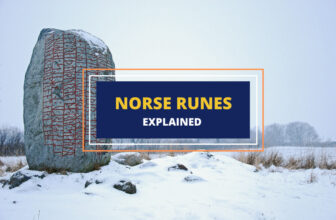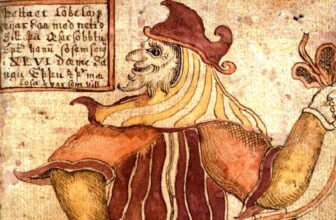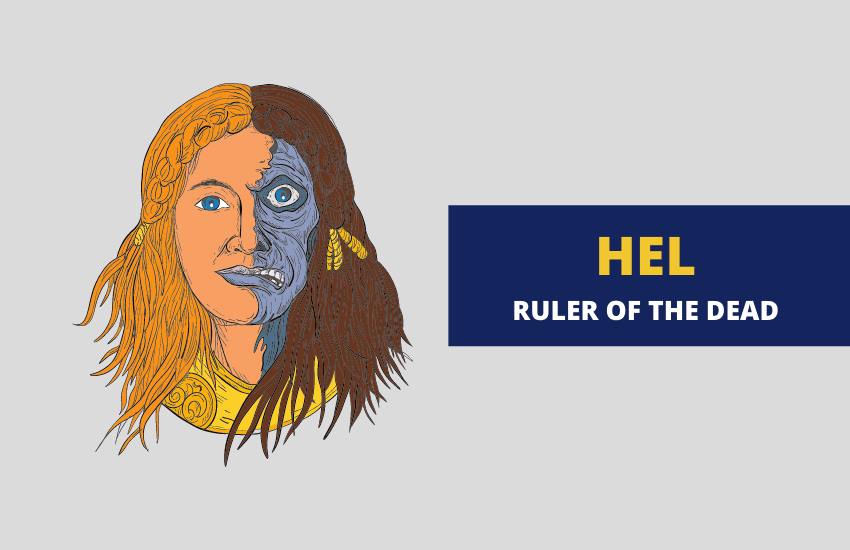
Table of Contents
Some Norse gods have dozens of their myths and legends preserved to this day while others barely have one or two. As a result of that, some gods are much more famous and well-known than others. Hel is one of those deities scarcely mentioned in Norse legends but who remains exceedingly popular.
Here’s her story.
Who is Hel?
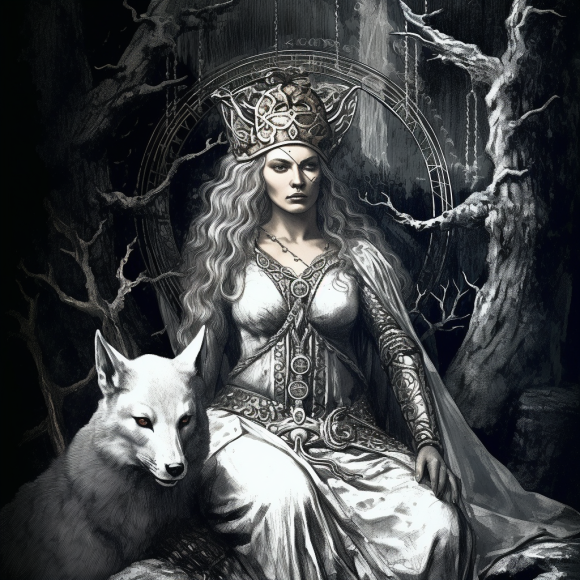
Hel (meaning Hidden in Old Norse) is the daughter of the god of mischief Loki and the giantess Angrboda (Anguish-boding from Old Norse). Hel also has two brothers from the same union – the giant wolf and slayer of Odin Fenrir and the world serpent and killer of Thor, Jörmungandr. Suffice it to say that Hel is a part of a rather dysfunctional and maligned family.
As the daughter of a half-god/half-giant and a giantess mother, Hel’s “species” is somewhat unclear – some sources call her a goddess, others call her a giantess, and still others describe her as a jötunn (a type of ancient Norse humanoid often mentioned interchangeably with giants).
Hel is described as a harsh, greedy and uncaring woman, but in most depictions, she comes across as a neutral character who is neither good nor bad.
Hel and Helheim
Hel’s most important role in Norse mythology, however, is as a ruler of the Norse underworld by the same name – Hel. This underworld is also often called Helheim but that name seems to have appeared in later authors only to help distinguish the person from the place. Hel, the place, was said to be located in Niflheim – an ice-cold realm which translates as World of Mist or Home of Mist.
Like Hel the goddess, Niflheim is very rarely mentioned in Norse myths and was usually talked about specifically as the realm of Hel.
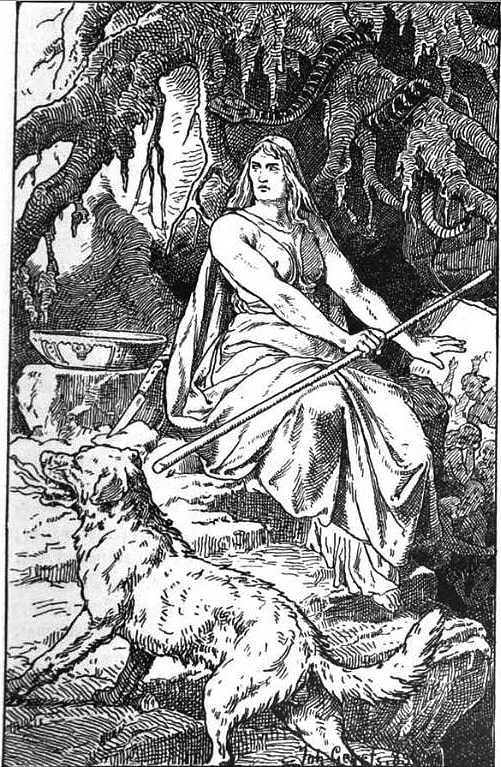
Hel’s Appearance
In terms of her visual appearance, Hel was usually described as a woman with part-white and part-black or dark blue skin. This creepy image fits with her character which is most often described as indifferent and cold. Hel is rarely called “evil” but is often viewed as unsympathetic to everyone else.
There are two or three main “afterlives” in Norse mythology, depending on how you count them. Unlike in most other religions where “good” people go to Heaven or to a “good” afterlife and “bad” people go to Hell or to a “bad” afterlife/underworld, in Norse mythology, the system is somewhat different.
1. Valahall
There, warriors who die in battle, men or women alike, go to Valhalla – the great hall of Odin. In Valahall, these heroes drink, feast, and practice fighting with each other while they wait to join the gods in Ragnarok, the final battle.
2. Fólkvangr
According to some myths, there’s a second realm equivalent to Valhalla and that was Freyja’s heavenly field, Fólkvangr. Fallen heroes are said to also go there to await Ragnarok after their deaths. The distinction between Valhalla and Fólkvangr comes from the fact that Norse myths actually have two pantheons of “good” deities – Odin’s Æsir/Aesir/Asgardian gods and Freyja’s Vanir gods. As the former are more famous than the latter nowadays people usually skip over Freyja’s Fólkvangr and only mention Valhalla.
3. Hel
Hel, the place, is the “Underworld” of Norse mythology but the people who went there weren’t “bad” or “sinners”, they were just the ones who didn’t die in battle and therefore didn’t “earn” a place in Valhalla or Fólkvangr. Unlike the underworlds in other religions, Hel isn’t a place of torture, anguish, and hot cauldrons of boiling oil. Instead, Hel was just a cold, misty, and extremely boring place where nothing really happened for all eternity.
There are some legends like the Heimskringla which hint that Hel, the goddess, might have abused her subjects to some extent. Heimskringla describesthe fate of king Dyggvi. As the king died of sickness, he went to Hel where it is said that…
but Dyggvi’s corpse
Hel does hold
to whore with him;
It’s unclear what the author meant with to whore with him but as there are no other sources which mention any torture in Hel, the realm, it’s generally assumed that it was just a boring place where the “unworthy” souls were kept. That’s also supported by the fact that Hel was given her position as jailor of the underworld by Odin himself and there are no indications that the Allfather god meant for her to torture people.
In Snorri Sturluson’s Prose Edda, “all of Hel’s people” were said to take part in Ragnarok together with Loki. This implies that, just as the warriors in Valhalla and Fólkvangr fight on the side of the gods, Hel’s subjects will fight on the side of her father Loki and the giants.
This isn’t mentioned anywhere else, however, and Hel herself isn’t said to have taken part in Ragnarok. As a result, not all scholars agree that those who go to Helheim will fight with Loki in Ragnarok. As the goddess Hel doesn’t fight in Ragnarok it’s unclear whether she lived or died during/after the event.
Hel vs. Hell
Some people think that the Christian underworld Hell comes from the Norse concept of Hel. However, that’s not true. The reason Hel and Hell share the same name is much simpler – when the Bible was translated into English from Greek and Jewish, the English translators just anglicized the Norse word for the underworld in their translations. There simply wasn’t any other English word for Hell at the time.
In terms of how Hel and Hell are described, however, the two “realms” are drastically different. In fact, a common joke among contemporary Norse pagans is that the Christian Heaven sounds very similar to the Norse Hel – both are calm misty/cloudy places where nothing really happens for all eternity. Entire mini-movies have been created on this subject.
It’s just a joke, of course, but it does illustrate how differently the ancient Norse and ancient Middle-Eastern people viewed what “good” and “bad” afterlives would look like.
Hel as Baldr’s Keeper
The one myth that features Hel most prominently is The Death of Baldur. In Norse mythology, Baldur or Baldr was the god of the sun and the most beloved son of Odin and Frigg. In this myth, Baldr is killed during a feast by his blind brother Höðr who was tricked into doing so by Hel’s father, Loki.
As Baldr didn’t get a heroic death in battle but was killed in an accident, he went straight to Hel’s realm. The Æsir wept for the god of the sun and wanted to save him from this fate. They sent Baldr’s other brother, the messenger god Hermóðr or Hermod, to plead with Hel for Baldr’s release.
Hermod rode to Niflheim on the eight-legged horse Sleipnir – another child of Loki – and told Hel that all of Asgard wept for Baldr. She begged the goddess of the underworld to release Baldr’s soul to which Hel replied with a challenge:
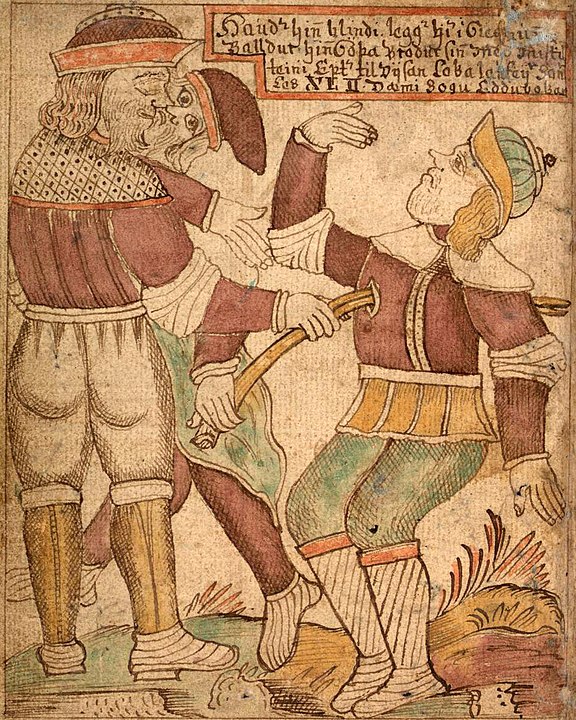
“If all things in the world, alive or dead, weep for him [Baldr], then he will be allowed to return to the Æsir. If anyone speaks against him or refuses to cry, then he will remain with Hel.”
Hermod and the other Æsir quickly went through the Nine Realms and told everyone and everything that they should weep for Baldr to save his soul. As the sun god was universally loved, everyone in the Nine Realms wept for him except the giantess Þökk or Thǫkk.
“Let Hel hold to that she hath!” Thǫkk said and refused to shed a tear for him. Later in the story, it’s mentioned that Thǫkk was likely the god Loki in disguise.
Funnily enough, if we accept that the souls in Hel’s realm fight alongside Loki during Ragnarok, that would imply that Baldr also fought against the Æsir in the final battle.
Symbolism of Hel
It’s easy to equate Hel with the rulers of other Underworlds such as Satan of Christianity or Hades of Greek myth. However, like Hades (and unlike Satan), the Norse goddess/giantess isn’t described as strictly evil. Most of the time, she’s said to be just indifferent and cold to the troubles of the other gods and people.
Hel may have refused to let go of Baldr’s soul in The Death of Baldur story but this is only because she refused to do the other gods a favor. Baldr’s soul was rightfully sent to Hel in the first place and there was no wrong-doing on Hel’s part.
In other words, Hel symbolizes just how the Norse people viewed death – cold, indifferent, and tragic but not necessarily “evil”.
Hel is associated with Garmr, a wolf or dog who is described as guarding Hel’s gate, a hellhound quite literally. She is sometimes associated with crows as well.
Importance of Hel in Modern Culture
As a personification of death and the underworld, Hel has inspired many paintings, sculptures, and characters over the years. While not all of them are always called Hel, the influence is often undeniable. At the same time, many of Hel’s representations in modern literature and pop-culture are not always accurate compared to the original character but are instead different variations of it.
One of the most famous examples is the goddess Hela from the Marvel comics and MCU movies where she was played by Cate Blanchett. There, the character of Hela was the older sister of Thor and Loki (who were also brothers in the MCU). She was outright evil and tried to take Odin’s throne.
Other examples include Hel in the fantasy Everworld book series by author K.A. Applegate, as well as video games such as Viking: Battle for Asgard, the Boktai game series, the video game La Tale, and the famous PC MOBA game Smite.
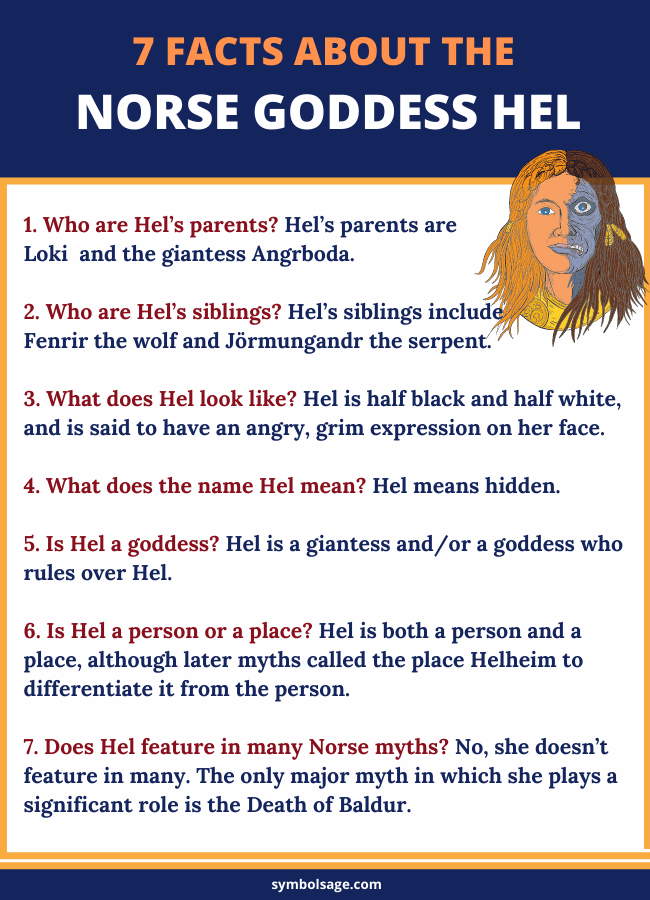
Wrapping Up
Hel is a cold, uncaring character in Norse mythology who was neither good nor evil. As the ruler of one of the places where the Norse were believed to go after death, she had an important role. However, she doesn’t feature prominently in many myths.





